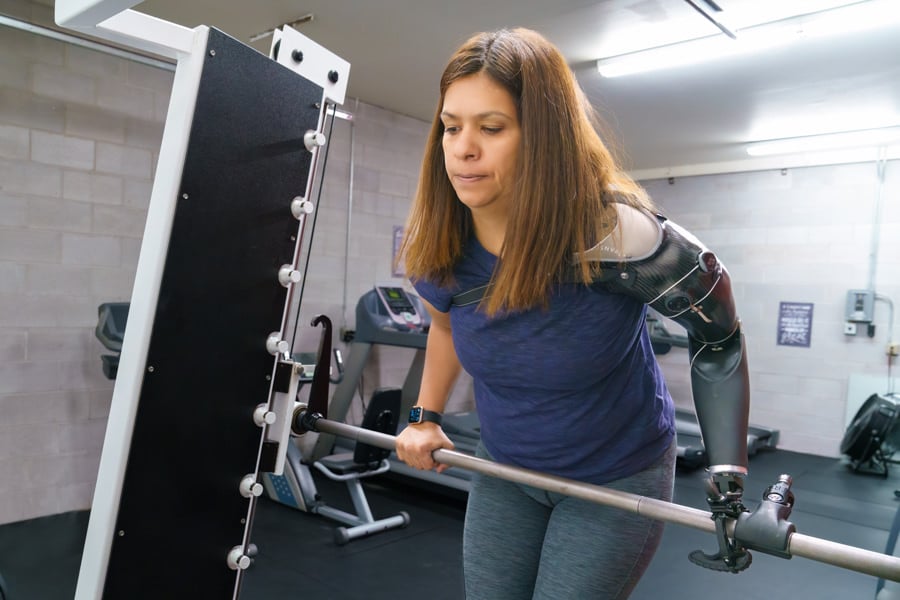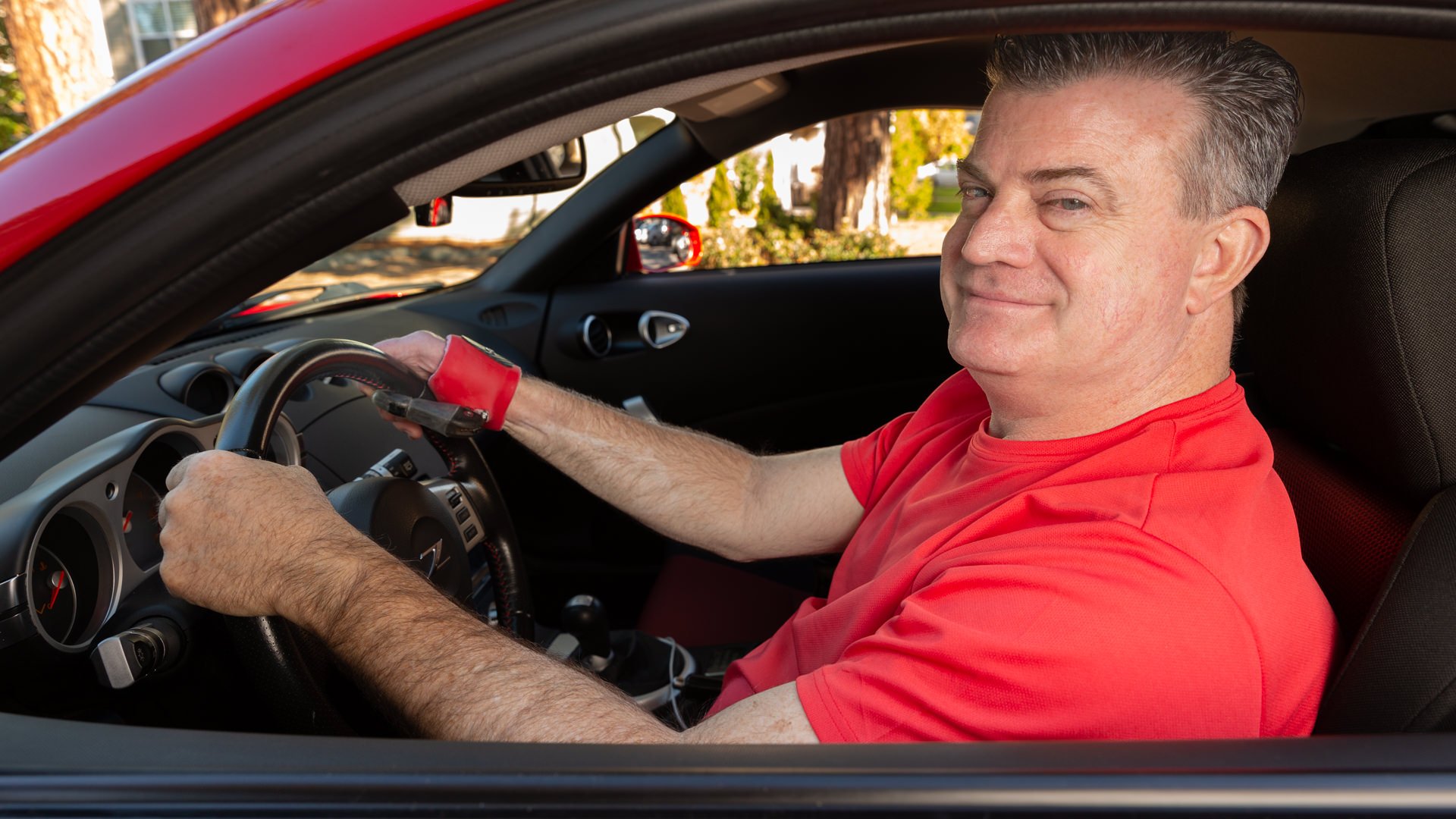After an amputation, it can be hard to think about the future. Life without a part of you can be hard to fathom. Learning about your options can help you move toward acceptance. Or perhaps you have a congenital amputation and you'd like to learn more about your prosthetic options.
But the options themselves can be overwhelming! We’ve created this article to walk you through what all your different options are based on your amputation level. Keep in mind, though, that the type of prosthetic device you get is not just based on your preference — your insurance coverage can also play a heavy role in what options you have available. We also implore you to keep an open mind and listen to your prosthetist and clinical therapy specialist — they will speak with you about your goals, lifestyle and the work you do, then make a recommendation based on their knowledge and experiences with past patients. But it’s a good idea to start thinking about what type of device you would like to wear.
What is your amputation level? Use this illustration to determine yours:
Bilateral amputations:
Prosthetic options: passive, body-powered, myoelectric, activity-specific, or hybrid (combines different types of devices).
Patient Success Story with this amputation level: Gerry Kinney, Jason Koger, Jameson Davis.
Things to keep in mind: This is the level of amputation that benefits most from the experience that Arm Dynamics clinical teams have.
See also: Bilateral Limb Loss, Congenital Bilateral Limb Differences.
Forequarter and Shoulder Disarticulation:
Prosthetic options: passive, body-powered, myoelectric, activity-specific, or hybrid (combines different types of devices).
Patient Success Story with this amputation level: Sam Rosecrans.
Things to keep in mind: This level of amputation may benefit from Targeted Muscle Reinnervation (TMR).
See also: Shoulder Level Amputations.
Transhumeral/Above Elbow:
Prosthetic options: passive, body-powered, myoelectric, activity-specific, or hybrid (combines different types of devices).
Patient Success Stories with this amputation level: Claudia Castellanos, Wendi Parker, Max Okun, Austin Anderson, Kate Jorgenson.
Things to keep in mind: This level of amputation may benefit from Targeted Muscle Reinnervation (TMR).
See also: Above the Elbow Amputations.
Transradial/Below Elbow:
Prosthetic options: passive, body-powered, myoelectric, activity-specific, or hybrid (combines different types of devices).
Patient Success Stories with this amputation level: Xavier Collier, Hugo Linares, Eduardo Garcia, Shaholly Ayers, Lauren Scruggs Kennedy.
See also: Below the Elbow Amputations.
Wrist/Styloid Disarticulation:
Prosthetic options: passive, body-powered, myoelectric, activity-specific, or hybrid (combines different types of devices).
Patient Success Stories with this amputation level: Tom Seibert.
See also: Prosthetic Options for Wrist Disarticulations.
Transcarpal and Transmetacarpal/Through the Palm:
Prosthetic options: passive, body-powered, myoelectric, activity-specific.
Patient Success Stories with this amputation level: Alex Krueger, Adrian Albrich, Candice Dicke.
See also: Partial Hand Limb Differences: Through the Palm.
Metacarpophalangeal Disarticulation/Amputation at the MCP Joint of the Finger(s):
Prosthetic options: passive (passive silicone restorations or positionable by the other hand), body-powered, myoelectric, activity-specific, or hybrid (combines different types of devices).
Patient Success Story with this amputation level: Mark Betters.
Things to keep in mind: For positionable, body-powered options, both Point Designs and Naked Prosthetics have produced finger-length devices for MCP disarticulations.
See also: Better Choices for People with Partial Hand and Finger Loss, Finger and Partial Hand Devices in Action.
Interphalangeal Amputation/Amputation at PIP Joint of the Finger(s):
Prosthetic options: passive (passive silicone restorations or positionable by the other hand) or body-powered.
Patient Success Story with this amputation level: Shane Brunscheon.
Things to keep in mind: For positionable and body-powered options, both Point Designs and Naked Prosthetics have produced short devices for PIP amputations.
See also: Better Choices for People with Partial Hand and Finger Loss, Finger and Partial Hand Devices in Action.
Thumb amputation:
Prosthetic options: passive (passive silicone restorations or positionable by the other hand) or body-powered.
Patient Success Story with this amputation level: Dennis Roberts.
Things to keep in mind: For positionable and body-powered options, both Point Designs and Naked Prosthetics have produced devices for thumb amputations.
See also: Thumb Loss.
Now that you know your options, we would love for you to contact us and let us know you’re interested in a complimentary consultation. We will discuss all available options for you. If you have already been through the process of choosing the perfect device for you and your amputation level, let your peers know how you made your decision in the comment section below!









%20President%20and%20Senior%20Clinical%20Director.jpg?width=600&height=600&name=John%20M.%20Miguelez%2c%20CP%2c%20FAAOP(D)%20President%20and%20Senior%20Clinical%20Director.jpg)










No Comments Yet
Let us know what you think